NASA has captured a remarkable array of stunning NASA space photos that showcase the awe-inspiring beauty and complexity of the universe. One of the most iconic images is “Earthrise,” taken during the Apollo 8 mission, which presents a breathtaking view of our planet rising above the lunar horizon. This photograph not only highlights the fragile beauty of Earth but also played a crucial role in fostering environmental awareness. Another standout image is “The Pillars of Creation,” captured by the Hubble Space Telescope, which reveals towering columns of gas and dust in the Eagle Nebula, where new stars are born. Such images exemplify NASA’s ability to combine art and science, captivating audiences worldwide.
Among the stunning NASA space photos, the Great Red Spot of Jupiter and the mesmerizing rings of Saturn stand out as testaments to the dynamic nature of our solar system. The Juno spacecraft has provided incredible views of Jupiter, showcasing the intricate swirling patterns of its atmosphere, while the Cassini spacecraft captured Saturn’s rings illuminated by the Sun in a dazzling display. Additionally, the “Hubble Deep Field” photograph unveils thousands of galaxies in a single tiny patch of sky, emphasizing the vastness of the universe. Each of these stunning images not only captivates the viewer but also serves as a reminder of the ongoing quest for knowledge and understanding of the cosmos.
Top 10 Stunning Space Photos Taken By NASA
1. Earthrise

Captured during the Apollo 8 mission in December 1968, Earthrise is one of the most iconic images in the history of space exploration and is often regarded as one of the most stunning NASA space photos ever taken. The photograph shows the Earth rising above the lunar horizon as astronauts Frank Borman, James Lovell, and William Anders orbited the Moon. This breathtaking view provides a unique perspective, highlighting the fragility of our planet against the stark, desolate landscape of the Moon. The image not only showcases the beauty of Earth but also serves as a poignant reminder of our shared responsibility to protect our home.
The impact of Earthrise transcended its scientific significance, becoming a powerful symbol for the environmental movement. As one of the first images to depict Earth from such a distance, it inspired many to reflect on the interconnectedness of all life and the need for global stewardship. The photograph’s ability to evoke deep emotions and provoke thought is what makes it one of the most enduring and stunning NASA space photos. It captures not just a moment in time, but a profound understanding of humanity’s place in the cosmos, urging us to cherish and protect the only home we have.
2. The Pillars of Creation
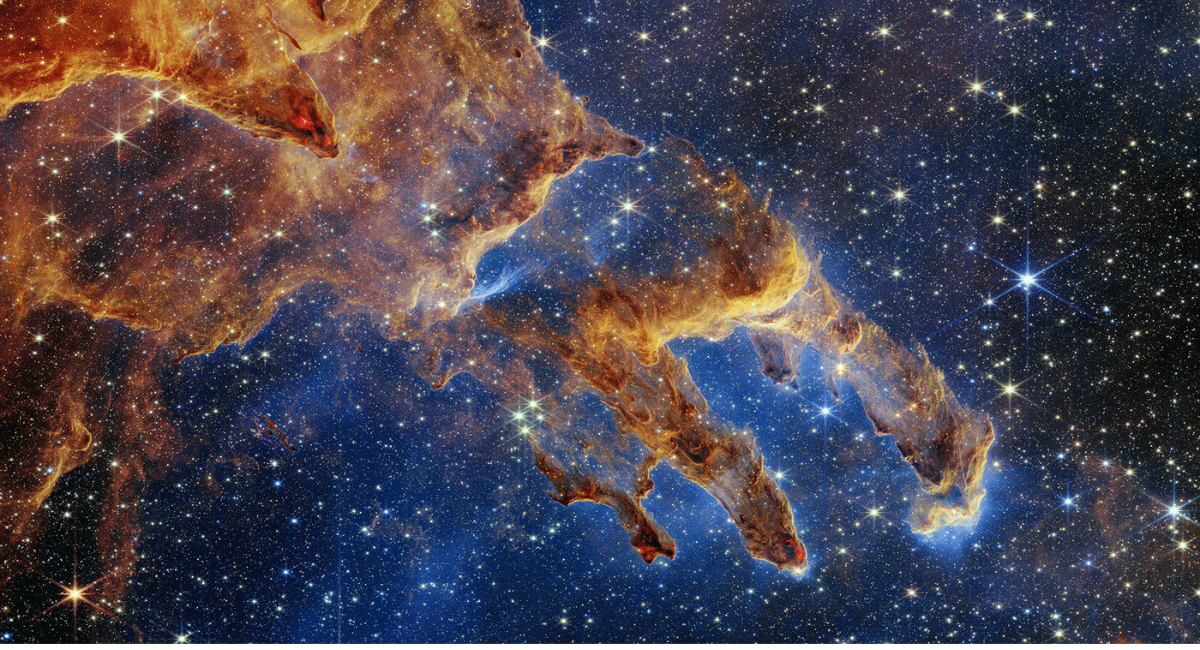
“The Pillars of Creation,” captured by the Hubble Space Telescope in 1995, is one of the most iconic images in the realm of stunning NASA space photos. This breathtaking photograph depicts towering columns of gas and dust located in the Eagle Nebula, approximately 6,500 light-years from Earth. The pillars, which are dense regions of interstellar matter, are where new stars are being born, showcasing the intricate processes of stellar formation. The vibrant colors and detailed textures in the image highlight the beauty of the cosmos and the complex phenomena that occur within it, making it a favorite among both scientists and art enthusiasts alike.
The significance of “The Pillars of Creation” goes beyond its visual allure; it serves as a reminder of the ongoing processes of creation and destruction in the universe. As the light from nearby young stars illuminates the columns, it reveals not only the stunning beauty of the scene but also the dynamic nature of stellar evolution. This captivating image is a perfect example of stunning NASA space photos that inspire curiosity and wonder about our universe. Through the lens of the Hubble Space Telescope, we gain insight into the grandeur of cosmic structures, reminding us of the intricate tapestry of stars, gas, and dust that makes up our galaxy.
3. The Great Red Spot

The Great Red Spot, a massive storm on Jupiter, has fascinated astronomers and space enthusiasts alike for centuries. This colossal hurricane, larger than Earth itself, has been raging for at least 350 years and continues to be a subject of intense study. Stunning NASA space photos captured by the Juno spacecraft reveal the swirling clouds and intricate details of this atmospheric marvel. The images showcase the vibrant colors and complex dynamics of the storm, providing insights into Jupiter’s weather patterns and the planet’s overall atmospheric behavior.
NASA’s images of the Great Red Spot not only highlight its size but also reveal changes in its structure and intensity over time. These stunning NASA space photos enable scientists to study the interactions between the storm and the surrounding atmosphere, enhancing our understanding of gas giant planets. With each new image, we gain a deeper appreciation for this incredible phenomenon and the powerful forces at play in our solar system, reminding us of the beauty and complexity of the universe we inhabit.
4. Saturn and Its Rings

Saturn, the sixth planet from the Sun, is perhaps best known for its breathtaking rings, making it one of the most stunning celestial bodies in our solar system. NASA has captured numerous stunning NASA space photos of Saturn and its intricate ring system, revealing the planet’s mesmerizing beauty and complexity. These rings are composed of countless ice particles, ranging in size from tiny grains to massive chunks, creating a vibrant display that can stretch out thousands of kilometers into space. The images taken by NASA’s Cassini spacecraft during its mission from 2004 to 2017 provided unprecedented detail, allowing scientists and enthusiasts alike to appreciate the dynamic nature of these icy rings.
The stunning visuals of Saturn not only showcase its spectacular rings but also highlight the planet’s atmospheric features, including its striking yellow and gold hues. Through stunning NASA space photos, we can observe the intricate patterns of clouds swirling in Saturn’s upper atmosphere, as well as the shadow cast by its rings onto the planet itself. These images serve as a reminder of the beauty and complexity of our solar system, encouraging further exploration and study of the planets that share our cosmic neighborhood. Saturn and its rings continue to fascinate scientists and space enthusiasts alike, demonstrating the extraordinary capabilities of space photography in revealing the wonders of the universe.
5. The Andromeda Galaxy
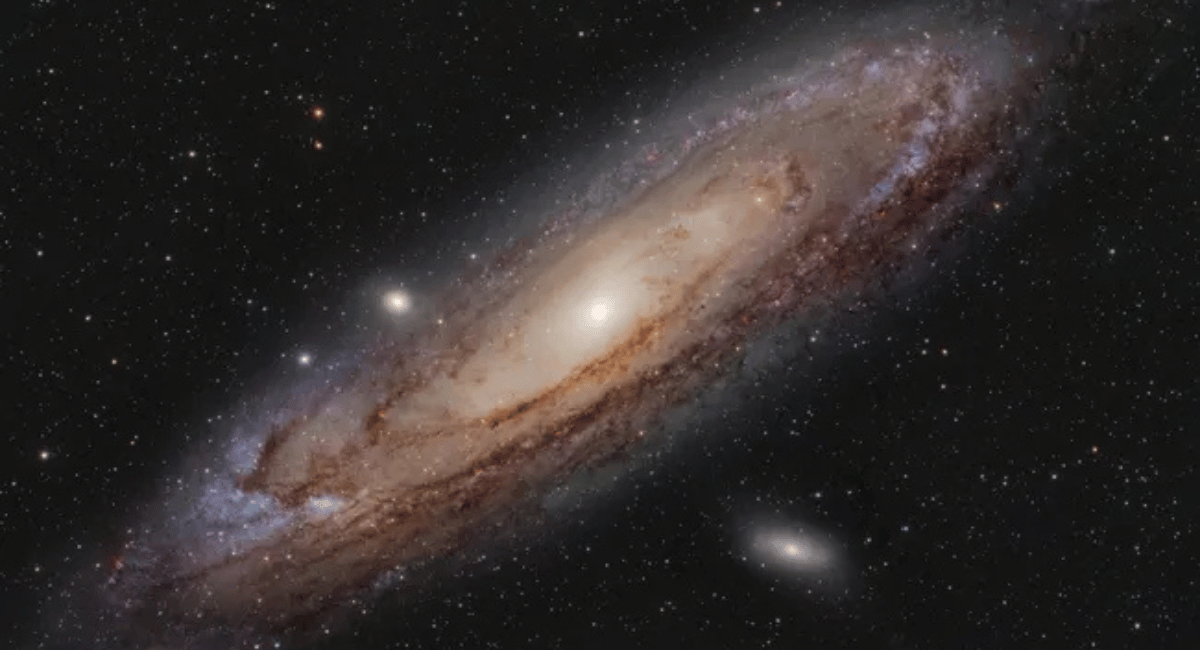
The Andromeda Galaxy, located approximately 2.537 million light-years away from Earth, is one of the most stunning celestial objects in the night sky. It is the nearest spiral galaxy to our Milky Way and is home to over a trillion stars, as well as countless gas clouds and dust lanes. The Andromeda Galaxy has been extensively studied and captured in stunning NASA space photos, particularly by the Hubble Space Telescope, which has revealed its spiral arms and intricate structure in breathtaking detail. These images showcase not only the beauty of Andromeda but also provide valuable insights into the formation and evolution of galaxies.
NASA’s stunning space photos of the Andromeda Galaxy have captivated astronomers and space enthusiasts alike, highlighting its role as a crucial piece of our cosmic neighborhood. One of the most famous images captures the galaxy’s bright core and sweeping spiral arms, illustrating the dynamic processes at work within this massive stellar city. As Andromeda and the Milky Way are on a collision course, these photographs serve as a reminder of the ongoing evolution of the universe. Through NASA’s incredible imaging Latest technology Trends, we can appreciate the beauty and complexity of the Andromeda Galaxy, inspiring future generations to explore the cosmos further.
6. The Orion Nebula

The Orion Nebula, located approximately 1,344 light-years away from Earth, is one of the most studied and photographed regions in the night sky. This stellar nursery is home to a vast array of young stars, gas, and dust, creating a vibrant tapestry of colors and shapes that captivate astronomers and stargazers alike. Among the stunning NASA space photos taken of the Orion Nebula, the images captured by the Hubble Space Telescope stand out for their incredible detail and depth. These photographs reveal intricate structures and the dynamic processes occurring within the nebula, showcasing the birth of new stars and the surrounding cosmic landscape.
NASA’s exploration of the Orion Nebula has provided invaluable insights into stellar formation and the life cycle of stars. The breathtaking images not only serve as scientific documentation but also as artistic expressions of the universe’s beauty. In these stunning NASA space photos, the vibrant hues of pink, blue, and orange contrast with dark regions of interstellar dust, creating a mesmerizing visual experience. The Orion Nebula is a testament to the wonders of our universe, inviting us to explore its depths and understand the fundamental processes that shape the cosmos.
7. The Hubble Deep Field
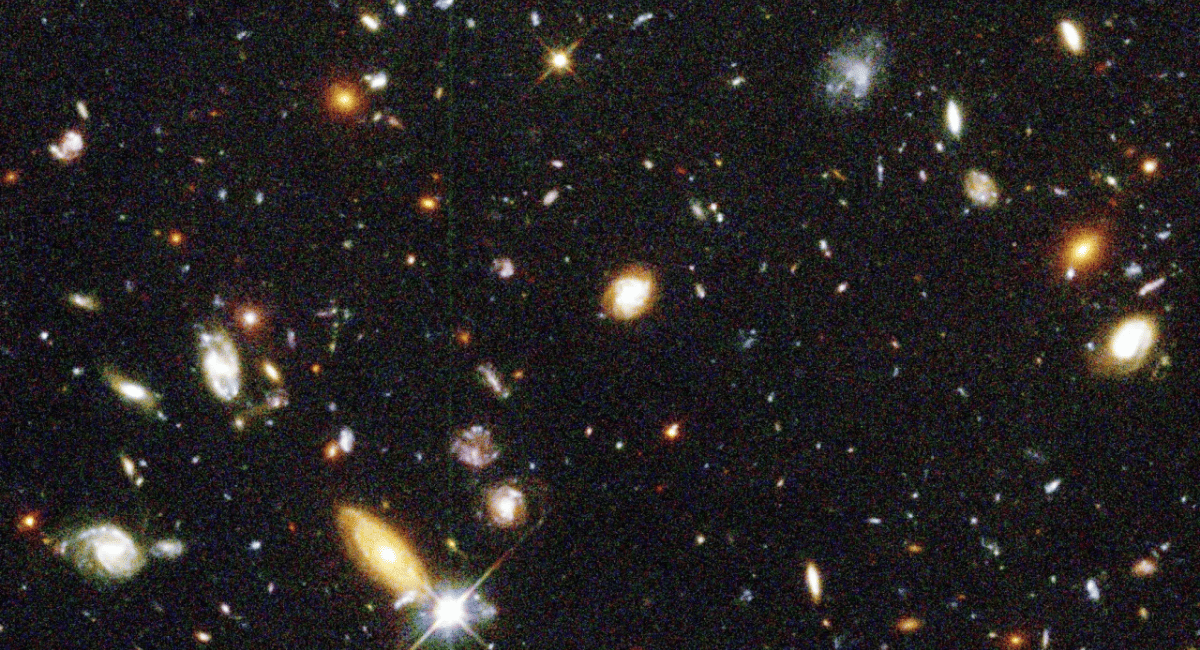
The Hubble Deep Field, captured in 1995, stands as one of the most significant achievements in the realm of stunning NASA space photos. This iconic image was created by pointing the Hubble Space Telescope at a seemingly empty patch of sky for 10 consecutive days, resulting in a breathtaking view that revealed thousands of galaxies, some over 13 billion light-years away. The photo showcases a diverse array of galactic structures, from spirals to ellipticals, illuminating the vastness of the universe and providing astronomers with invaluable insights into the formation and evolution of galaxies. This unprecedented glimpse into deep space forever changed our understanding of the cosmos and the sheer number of celestial bodies that exist beyond our Milky Way.
The Hubble Deep Field not only represents a remarkable technical achievement but also serves as an artistic masterpiece among stunning NASA space photos. Each tiny smudge in the image represents a galaxy, highlighting the richness of the universe and sparking curiosity about what lies beyond our own galaxy. This photograph has inspired further research and exploration, leading to follow-up studies that have expanded our knowledge of dark matter, galaxy formation, and the history of the universe. As one of NASA’s most celebrated images, the Hubble Deep Field continues to captivate the imaginations of scientists and the public alike, reminding us of the infinite wonders that await discovery in the cosmos.
8. The Space Shuttle Launch
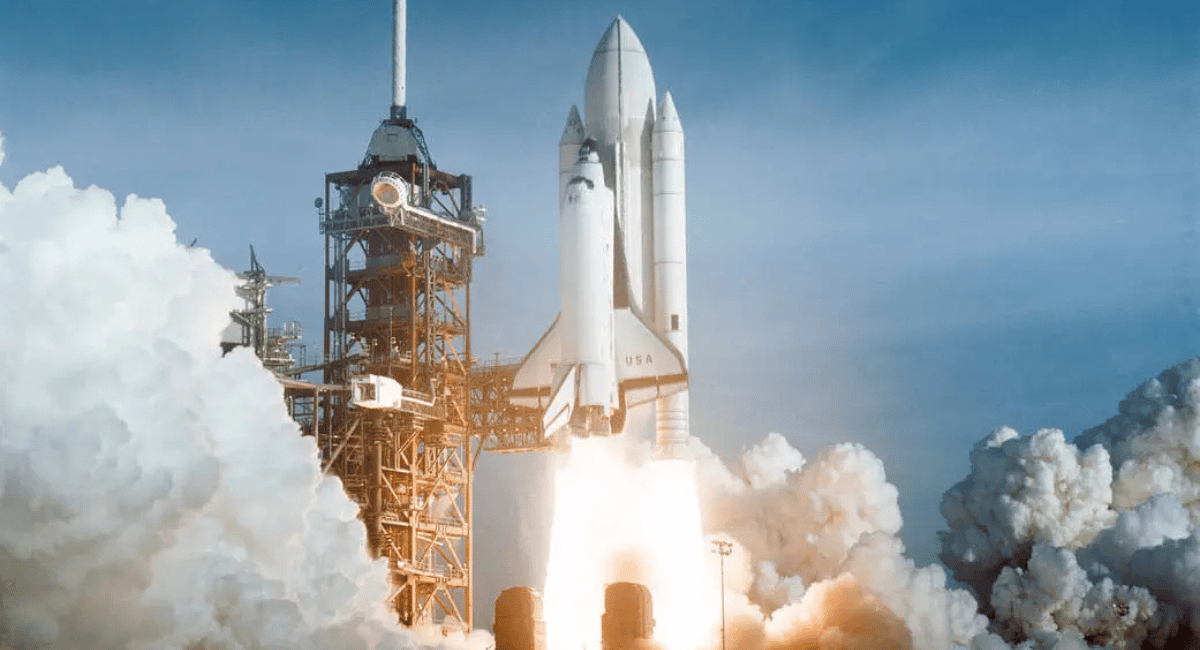
The space shuttle launch is a breathtaking spectacle that showcases the pinnacle of human engineering and determination. Stunning NASA space photos capture the sheer power and majesty of a shuttle as it lifts off from the launch pad, leaving behind a trail of fiery exhaust. These images not only highlight the technology involved in space exploration but also evoke a sense of wonder and excitement, as they represent humanity’s quest to explore the cosmos. Each launch was a meticulously orchestrated event, and NASA’s photographers have expertly documented these moments, allowing us to relive the thrill of space travel.
The vibrancy of the shuttle’s ascent against the backdrop of the blue sky provides a stark contrast that is beautifully rendered in these stunning NASA space photos. The visual documentation of each launch encapsulates the emotions of the mission—hope, ambition, and the spirit of discovery. From the first launch of the Space Shuttle Columbia in 1981 to the final mission of Atlantis in 2011, each photograph tells a story of bravery and innovation. The legacy of the space shuttle program continues to inspire future generations to look to the stars and dream of what lies beyond our planet.
9. Mars Rover Selfie
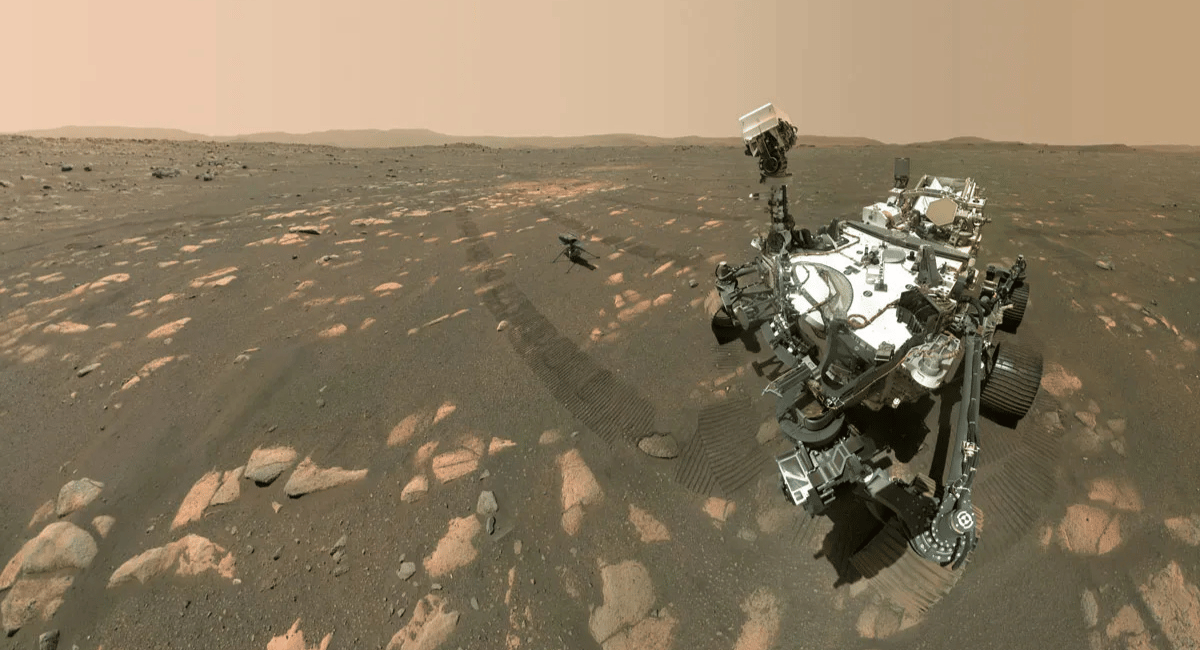
One of the most captivating examples of stunning NASA space photos is the selfie taken by the Mars rovers, particularly the Curiosity rover. This remarkable image showcases Curiosity’s rugged terrain as it explores the Martian landscape, providing a unique perspective of the Red Planet. The rover’s camera captures not only its own robotic features but also the surrounding Martian environment, including rocky outcrops and dusty plains. These selfies not only document the rover’s journey but also help scientists analyze the geological characteristics of Mars, making them invaluable for ongoing research and exploration.
The Curiosity rover’s selfies have become iconic representations of NASA’s exploration efforts and the advancements in space technology. Each image reflects a moment of discovery, inspiring curiosity and excitement about our quest to understand Mars. As part of a broader collection of stunning NASA space photos, these selfies serve to engage the public, inviting people to connect with the mission and the wonders of space exploration. Through these photographs, we gain a sense of presence on another planet, reminding us of the extraordinary achievements in science and engineering that make such explorations possible.
10. The Sun’s Corona
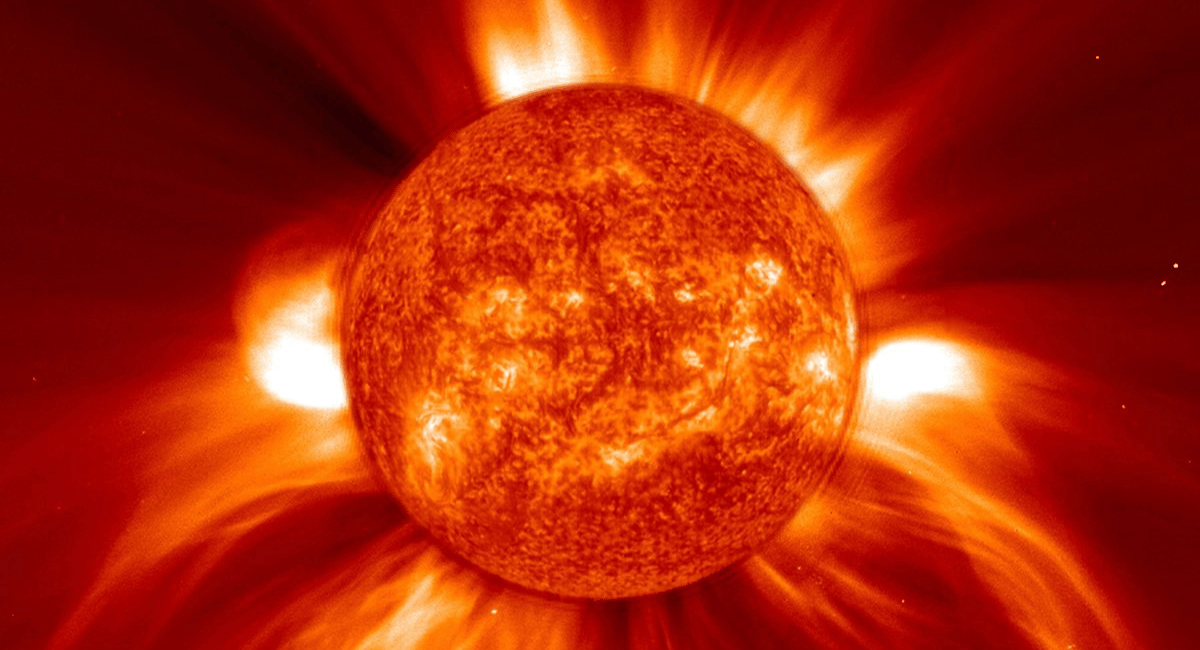
The Sun’s corona is the outermost layer of its atmosphere, extending millions of kilometers into space and characterized by its high temperatures and dynamic features. Captured in stunning NASA space photos, the corona is particularly striking during a total solar eclipse when it becomes visible against the darkened sky. These images reveal intricate structures formed by the Sun’s magnetic field, including coronal holes and solar prominences. NASA’s Solar Dynamics Observatory (SDO) has provided an unprecedented view of the corona, showcasing its ever-changing nature and the complex interactions between solar winds and magnetic fields.
Through these stunning NASA space photos, scientists have gained valuable insights into solar activity and its effects on the solar system. The observations made by SDO and other missions illustrate the corona’s role in phenomena such as solar flares and coronal mass ejections, which can impact satellite communications and power grids on Earth. By studying the corona, researchers can better understand the Sun’s behavior and its influence on space weather, highlighting the importance of these captivating images in advancing our knowledge of astrophysics and solar dynamics.



